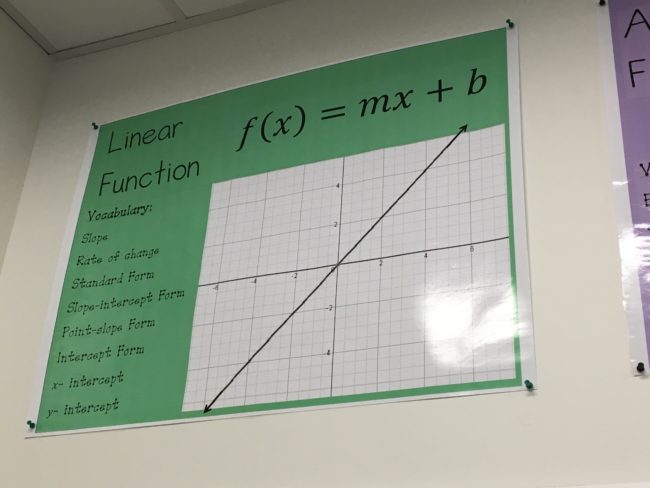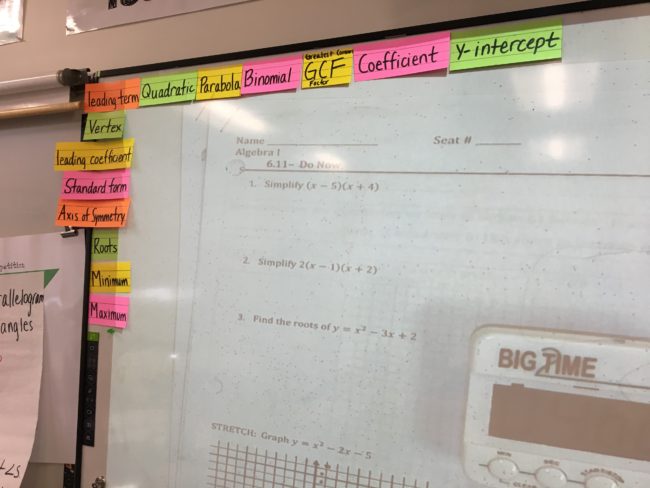04.04.17How Julia Addeo Improves Student Thinking By Improving Student Vocabulary
 A couple of weeks ago I shared a picture of Jo Facer at Michaela school. She’d used a list of sophisticated verbs that added depth and nuance to discussion about what a text “showed” to expand her students vocabulary and precision when discussing texts.
A couple of weeks ago I shared a picture of Jo Facer at Michaela school. She’d used a list of sophisticated verbs that added depth and nuance to discussion about what a text “showed” to expand her students vocabulary and precision when discussing texts.
The idea resonated with lots of folks so I am happy to be able to share a similar picture my colleague Katie Yezzi took in Julia Addeo’s classroom at North Star Academy High School in Newark.
The picture shows how Julia has taken key math vocabulary of the sort you might normally find posted in a “word wall” somewhere in the back corners of the classroom–where, quite possibly, only she would regularly see it–and put the terms around the edges of her white board instead to make it easy for students to use them.
The results are that 1) Julia is able to constantly if tacitly reinforce the background knowledge her students are building and 2) kids are caused to practice using sophisticated math vocabulary as a matter of habit–it’s hard not to. As a result they come to know these terms and concepts deeply, as I’ll demonstrate with video in just a minute. First here’s the picture.

Ok, now on to the video. Here’s a clip we shot a couple of years ago in Julia’s classroom. Even before she was posting her key vocab around the board, but after, crucially, she’d made a habit of posting and reinforcing the importance of not just knowing but using technical vocabulary in math class.
Addeo.Worked Example from Uncommon Schools on Vimeo.
It’s not just that Julia’s students do outstanding work finding ways to make a strong answer more precise, it’s that they are practicing applying and knowing more deeply the concepts of ‘argument,’ ‘translation,’ etc. Every time they use and apply a technical term they are engaging in retrieval practice and this makes their knowledge of the ideas stronger.
As an aside this is also a great example of something we call a “collectively worked example.” We think a worked example is an outstanding tool to use in the classroom, especially–but not only–as a last step after a Show Call.
We define a ‘worked example’ as a moment when the teacher revises or drafts an exemplar publicly, using and/or refining an original idea via multiple suggestions from class to create a version that meets or exceeds the quality of the work done by any one class member. One of the most valuable ways for students to improve an answer, of course, is by making the word choices more precise and powerful, which, again, you can see Julia’s students doing here.
Now that she’s nudged her students to use even more sophisticated vocabulary even more regularly, we can’t wait to see what she–and her students–do.
Thanks, Julia, your amazing work!

Thank you Doug. I’m so glad that you acknowledge that the essential facts must be taught and explained in relation to their importance and application in real life situations. Then we can relate them to the higher level thinking skills so necessary to the 21st century work place. (i.e.-analysis, synthesis and application)